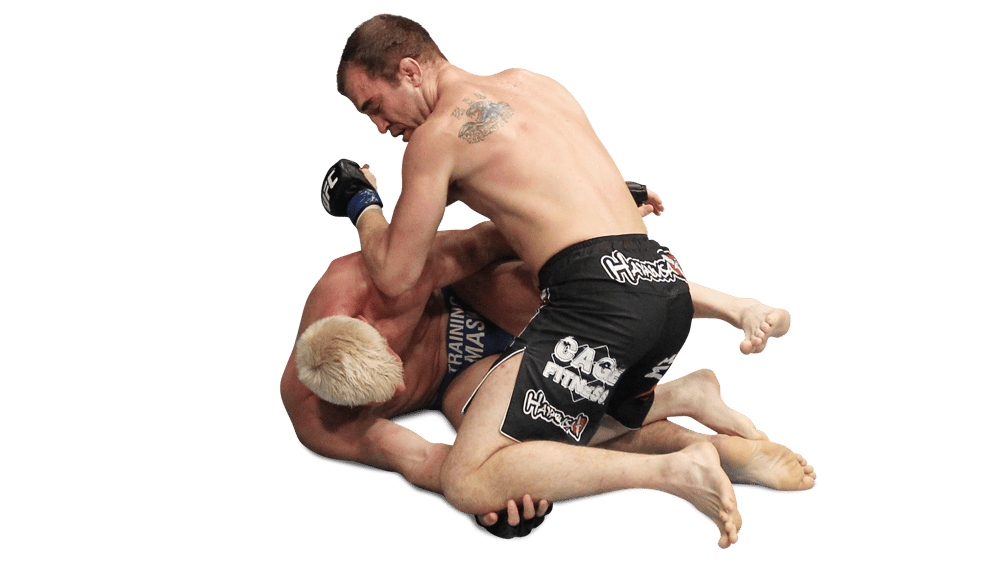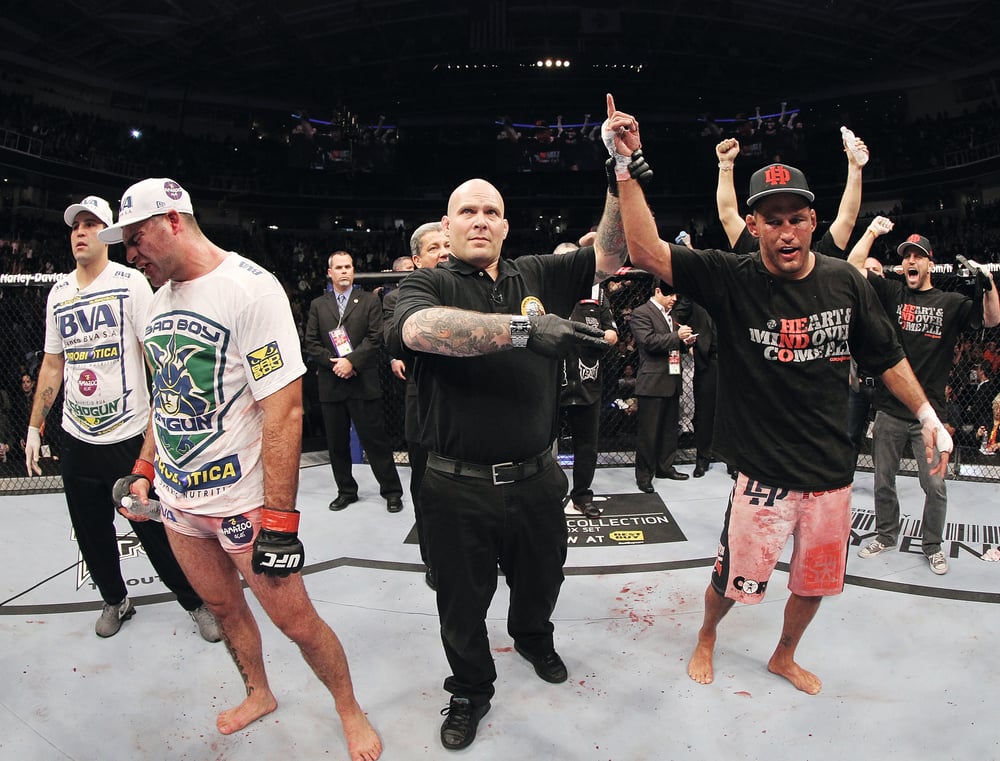
Issue 086
March 2012
UFC 144 will be special but is mainstream Japan ready for modern, Unified Rules MMA?
The Ultimate Fighting Championship will make a return to Japan for only the fifth time in the organization’s history in February – and the excitement of the occasion is evident everywhere.
Marc Goddard
UFC referee
Each issue UFC referee Marc Goddard brings fight fans the ref’s side of the story.
It was December of 1997 when then world’s pre-eminent MMA promotion first visited the land of the rising sun, and what will differ hugely in this year’s visit will be the application and adherence to the Unified Rules of MMA, something that was neither evolved nor in existence at the time of the previous event.
The term ‘Unified Rules of Mixed Martial Arts’ is widely spoken of and can now be referenced worldwide – but do you know what they are? Or how they became comprised?
Recognizing the need for standardization, the Unified Rules were constructed and then adopted by several of the key and leading representatives of US State Athletic Commissions.
Realizing the differing rules, additions and omissions from state to state led to widespread confusion, the forming of a standardized, recognized and ‘unified’ set of rules was a vital part of the evolution of the sport in the West.
That decision also moved mixed martial arts into line with the planet’s other more established sports; classic case being the our closest relative, boxing, where the Lonsdale Rules are maintained throughout the various governing bodies the world over.
Back to Japan, the most noticeable and biggest differences for many local fans to acclimatize to at UFC 144 will be the change from all rounds being timed over five minutes instead of the classic 10-minute opening round which featured in the once glorious Pride Fighting Championships. Plus, the removal of kicks and knees to the head of a grounded fighter, but the insertion and use of elbows to the head of a grounded fighter – although minor Japanese promotion Cage Force used the Unified Rules.

Not visibly noticeable, but just as important, will be the scoring system and criteria as defined by the Unified Rules – something most Japanese fans may also not be fully conversant with. Pride fights were scored at the end of the bout, rather than adding the scores at the end of each round using the 10-point must. Plus, there will be no yellow cards shown for inactivity and, of course, all the action will now take place inside the Octagon rather than a roped ring.
Naturally, other differences allude to the significant changes between the Unified Rules, currently in use within the UFC, and the unforgettable Pride rules. After all, the Japanese organization remains responsible for some of the most magical and unforgettable moments in MMA.
I am often asked what my opinion is on the current Unified Rules in comparison to the old Pride rules. I would have to say that the sport has moved on for the better. It’s my belief we are now as close as we’ll ever need to be to having a clearly defined, understood and applicable rule set for modern-day mixed martial arts. There will always be debate and deliberation as to what needs to be changed, added or deleted from the current rules and this should be encouraged and all eventualities explored.

Whilst the excitement and often jaw-dropping moments given to us throughout the history of Pride remains unquestioned, in today’s modern era of mixed martial arts – with its ‘blue chip’-endorsed athletes, network television broadcasts, our strive for mainstream acceptance and of paramount importance being the safety and longevity of the fighters’ careers – I believe we now have the balance of the rules correct.
Naturally, there will be instances that may lead to the need for a re-think or tweak in procedure or adaptation of the Unified Rules. After all, as with any new practice, MMA is still evolving, but at least we have the added bonus of a clear forerunning and trend-setting promotion rather than, to revert back to the ring, a number of established, even fragmented governing bodies like the WBA or WBC which, when coming together, can bring potential conflict.
It is my opinion and belief that the Unified Rules should be adhered to on a global scale when it comes to all mixed martial arts competition.
Any future changes to the rule structure should only come from the sport’s leading platform, in consultation of expert opinion of those considered the sport’s leading and most experienced personnel – be it practitioners past and present, considered experts, officials and of course those in both national and/or regional regulatory control.
A very good example of modern evolution and change of the rules would be the very recent decision by the UFC to have non-title main events contested over five five-minute rounds instead of the previous three five-minute rounds. And no more justification on this decision was required after the instant classic that was Dan Henderson vs ‘Shogun’ Rua at UFC 139 in November.










